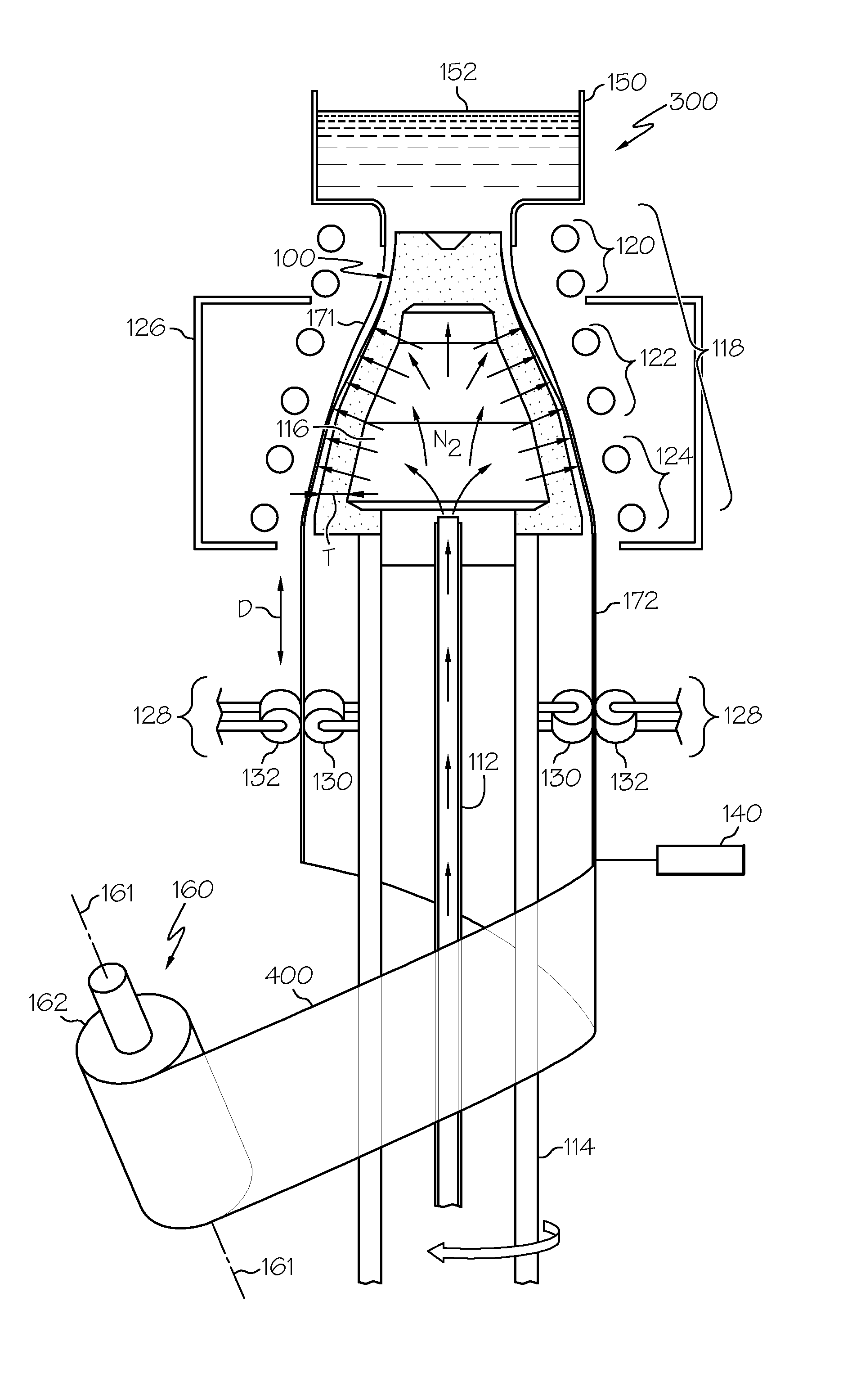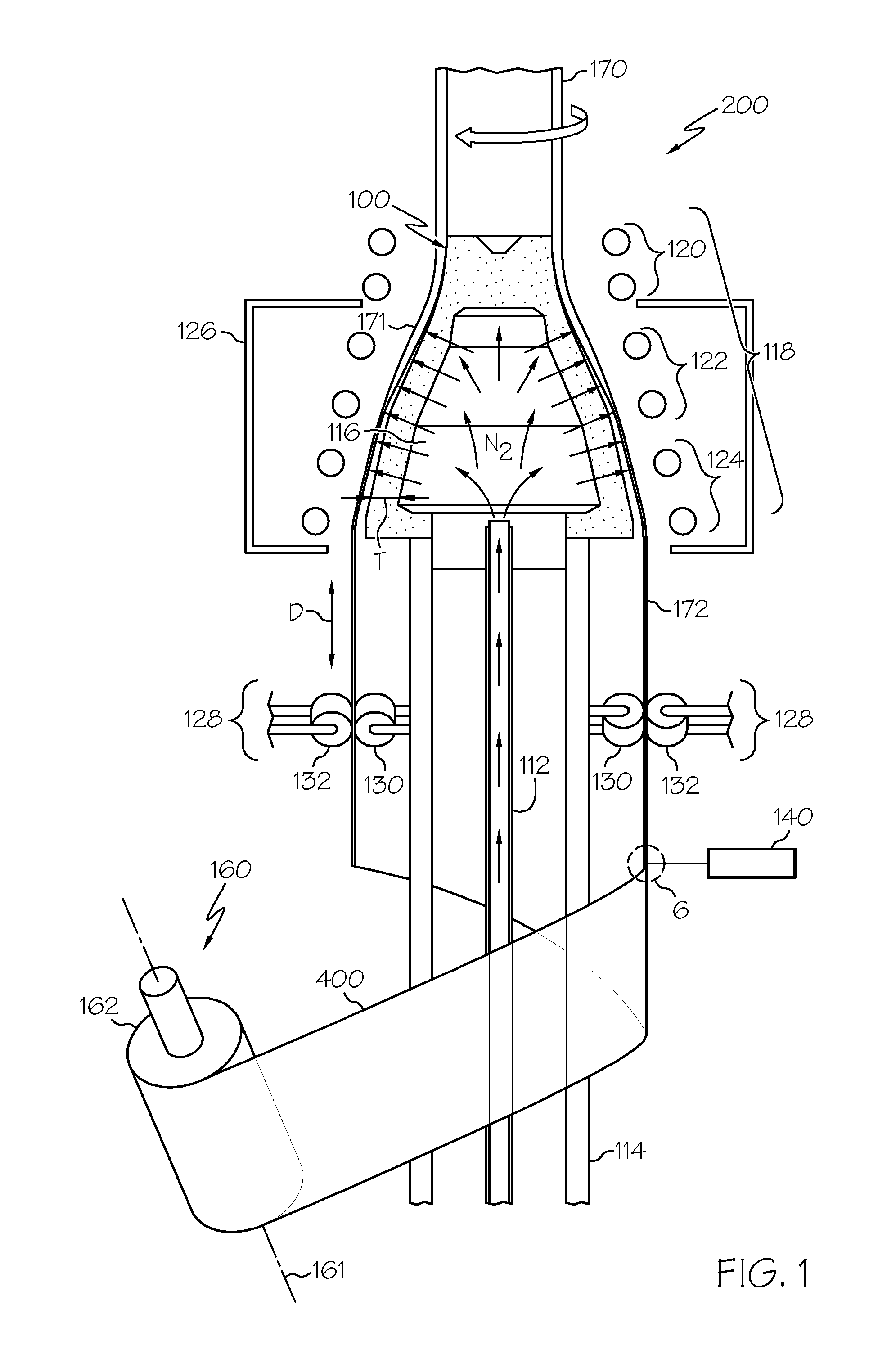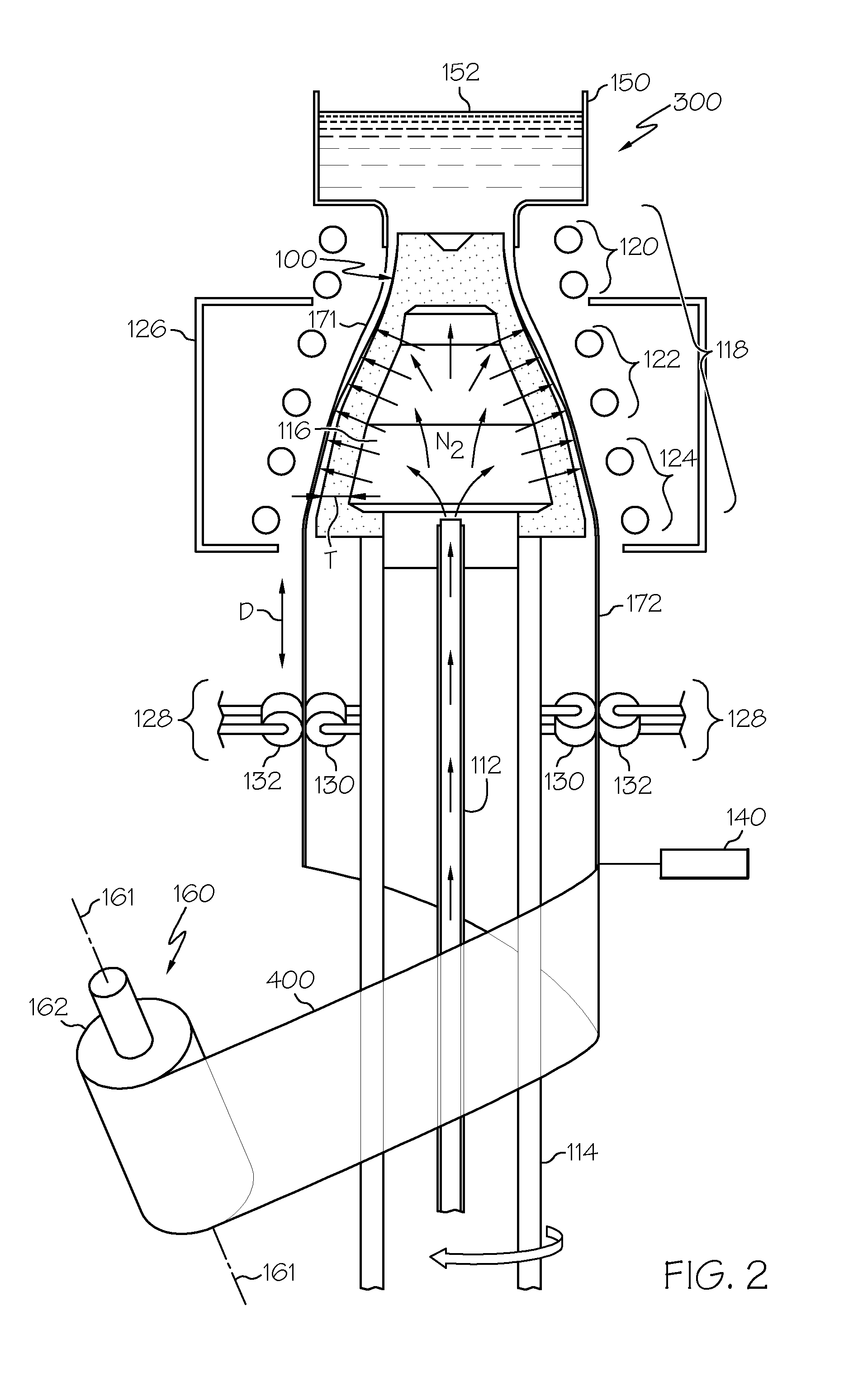Methods and systems for forming continuous glass sheets
a technology of continuous glass and glass sheets, applied in glass reforming apparatus, glass making apparatus, manufacturing tools, etc., can solve the problems of oled display devices, oleds and in particular individual oled electrodes, and oled organic layers that are not effective for sealing displays and are susceptible to degradation. , to achieve the effect of preventing the degradation of oled devices, oled display devices are not suitable for use in conjunction with
- Summary
- Abstract
- Description
- Claims
- Application Information
AI Technical Summary
Benefits of technology
Problems solved by technology
Method used
Image
Examples
example 1
[0060]A hollow tubular glass preform of 7761 Pyrex® (softening point=820° C., strain point=458° C.) having an inner diameter of 56 mm, an outer diameter of 60 mm and a thickness of 2 mm is disposed over a susceptor bearing having a top portion with an outer diameter of 55.4 mm, a bottom portion with an outer diameter of 102 mm and a sidewall having a thickness T of 6 mm. The tubular glass preform was rotated at a rate of 4 rpm with respect to the susceptor bearing 100. The tubular glass preform was heated to a first temperature T1 of 650° C. around the top portion of the susceptor bearing, to a second temperature T2 of 885° C. around the upper intermediate portion of the susceptor bearing, and to a third temperature T3 of 810° C. around the bottom portion of the susceptor bearing as the preform was drawn over the susceptor bearing at a rate of 100 mm / min. The softened glass of the tubular glass preform was blown and suspended over the susceptor bearing by a distance of about 120 mic...
PUM
| Property | Measurement | Unit |
|---|---|---|
| Temperature | aaaaa | aaaaa |
| Length | aaaaa | aaaaa |
| Softening point | aaaaa | aaaaa |
Abstract
Description
Claims
Application Information
 Login to View More
Login to View More - R&D
- Intellectual Property
- Life Sciences
- Materials
- Tech Scout
- Unparalleled Data Quality
- Higher Quality Content
- 60% Fewer Hallucinations
Browse by: Latest US Patents, China's latest patents, Technical Efficacy Thesaurus, Application Domain, Technology Topic, Popular Technical Reports.
© 2025 PatSnap. All rights reserved.Legal|Privacy policy|Modern Slavery Act Transparency Statement|Sitemap|About US| Contact US: help@patsnap.com



